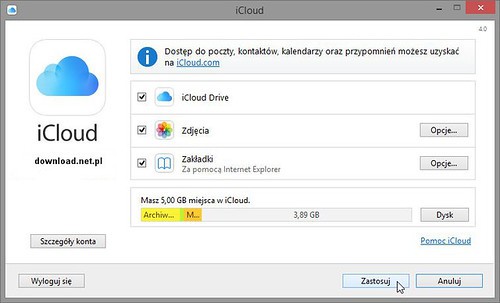Ensuring a Highly Available NAT Gateway is crucial for any AWS Virtual Private Cloud (VPC) setup. A NAT Gateway allows instances within a private subnet to access external services without exposing themselves to inbound traffic. Set up correctly, it ensures uninterrupted internet connectivity even if one Availability Zone goes down.
To configure a Highly Available NAT Gateway, you should deploy it in multiple Availability Zones within your VPC. This setup helps in maintaining connectivity and reduces the risk of a single point of failure. When a route is associated with a NAT Gateway, the traffic is directed based on the availability of the gateway in different zones.
Having a redundant, scalable, and resilient NAT Gateway configuration provides not only continuous access to the internet but also enhances overall network reliability. This ensures that your private instances can reliably send out traffic without interruption.
Building Resilient Network Architectures with AWS NAT Gateway HA
Why High Availability (HA) Matters for NAT Gateways
NAT gateways are critical for enabling instances in private subnets to communicate with the internet. If a NAT gateway fails, those instances lose internet access, potentially impacting your applications and services. Implementing HA ensures that if one NAT gateway becomes unavailable, another one seamlessly takes over, minimizing downtime and maintaining connectivity.
Achieving High Availability with Multiple NAT Gateways
The core principle of NAT gateway HA is deploying multiple NAT gateways across different Availability Zones (AZs) within a region. This redundancy ensures that even if an entire AZ experiences an outage, your instances can still reach the internet through a NAT gateway in a different AZ.
Steps to Configure NAT Gateway HA
- Create Multiple NAT Gateways: Deploy at least one NAT gateway in each AZ where you have private subnets that need internet access.
- Update Route Tables: Modify the route tables associated with your private subnets to include routes to all the NAT gateways. You can use a single route with multiple NAT gateway targets or create separate routes for each NAT gateway.
- Elastic IP Addresses: Associate an Elastic IP address with each NAT gateway to provide a static public IP address for your instances.
- Health Checks (Optional): Consider setting up health checks to monitor the status of your NAT gateways. If a health check fails, you can automatically reroute traffic to a healthy NAT gateway.
Best Practices for NAT Gateway HA
- Use Multiple Availability Zones: Deploy NAT gateways across at least two AZs to ensure redundancy and fault tolerance.
- Monitor NAT Gateway Metrics: Keep an eye on CloudWatch metrics like “ErrorRate” and “ActiveConnectionCount” to identify potential issues before they impact your application.
- Consider NAT Gateway Scaling: If you have high traffic volumes, you can configure your NAT gateways to scale automatically based on demand.
Important Considerations
| Feature | Benefit |
|---|---|
| Multiple AZs | Provides redundancy and fault tolerance in case of an AZ failure. |
| Elastic IPs | Ensures a static public IP address for your instances, even if a NAT gateway fails. |
| Health Checks | Enables automatic detection and recovery from NAT gateway failures. |
| NAT Gateway Scaling | Allows your NAT gateways to handle increased traffic loads without manual intervention. |
| Monitoring | Helps you identify and troubleshoot potential problems before they cause service disruptions. |
By following these guidelines and best practices, you can configure a highly available and resilient NAT gateway architecture for your AWS environment. This will ensure that your instances in private subnets have uninterrupted access to the internet, even in the event of an Availability Zone outage or a NAT gateway failure.
Key Takeaways
- Ensure a NAT Gateway spans multiple Availability Zones.
- Configure routes to handle potential failures.
- Combining redundancy, scalability, and resilience is key.
Configuring a Highly Available NAT Gateway
To ensure your NAT gateway is always available and reliable, it’s important to follow best practices. Setup involves creating NAT gateways and making them redundant across different Availability Zones.
Setting Up the NAT Gateway
First, create a NAT gateway for each Availability Zone (AZ) in your VPC. This setup uses Elastic IPs for each NAT gateway, ensuring it has a static IP address.
- Go to the VPC Dashboard.
- Select NAT Gateways and click Create NAT Gateway.
- Choose the subnet for the NAT gateway. This should be a public subnet.
- Assign an Elastic IP address to the NAT gateway.
- Repeat for each AZ in your VPC.
With a NAT gateway in each AZ, resources in private subnets can route outbound traffic through their respective NAT gateways. This setup ensures continued internet access, even if one AZ fails.
Ensuring High Availability and Redundancy
For high availability, each NAT gateway should be in separate AZs. Adjust the route tables for all private subnets to use the local NAT gateway for outbound traffic.
- Under Route Tables, select the route table linked to your private subnets.
- Add a route for 0.0.0.0/0 with the NAT gateway’s ID for that subnet.
Ensure you have a NAT gateway in each AZ your application is deployed in. This configuration allows traffic to route through a healthy NAT gateway even if an AZ goes down. Redundancy ensures the network remains operational during AZ failures, providing uninterrupted service for your VPC resources.
By following this approach, your setup uses NAT gateways effectively, providing both high availability and redundancy across your infrastructure.
Frequently Asked Questions
Configuring NAT gateways within AWS VPC for high availability requires understanding placement, best practices, and cost. Learn about crucial factors like pricing, subnet placement, and the differences between NAT and Internet gateways.
How can high availability for NAT gateways be achieved within AWS VPCs?
To ensure high availability, create a NAT gateway in each Availability Zone. This avoids single points of failure. If one zone goes down, gateways in other zones will still function, allowing continuous access to internet resources.
What best practices should be followed when configuring a NAT gateway in AWS for high availability?
Use multiple Availability Zones to avoid any single point of failure. Configure routing to direct traffic through each zone’s gateway. Regularly test and monitor the setup to identify any issues early. Ensure correct security group and route table settings.
How does the NAT gateway’s pricing structure impact the HA configuration in AWS?
NAT gateway costs include data processing and hourly charges. Deploying in multiple zones increases costs. However, this ensures better uptime. Weigh these costs against your need for high availability. Budgeting for multiple gateways is essential in critical environments.
What are the implications of placing a NAT gateway in a public versus private subnet in the context of HA?
NAT gateways must be placed in public subnets to work. Private subnets will use private IP addresses via the NAT gateway for internet-bound traffic. Placing them correctly ensures instances in private subnets can access necessary external services without exposing them directly.
Can you explain the differences between a NAT gateway and an Internet gateway in the realm of AWS networking?
A NAT gateway allows instances in private subnets to connect to the internet or other AWS services securely. External sources cannot initiate a connection. In contrast, an Internet gateway supports two-way communication, enabling instances in public subnets to accept connections from the internet.
What are the considerations for scaling NAT gateways to maintain high availability across multiple availability zones?
Scaling involves deploying multiple NAT gateways across zones and configuring route tables for workload distribution. Monitor traffic patterns and adjust the number of gateways as needed. AWS automatically scales the bandwidth, but resource planning is still crucial for maintaining availability and performance.







